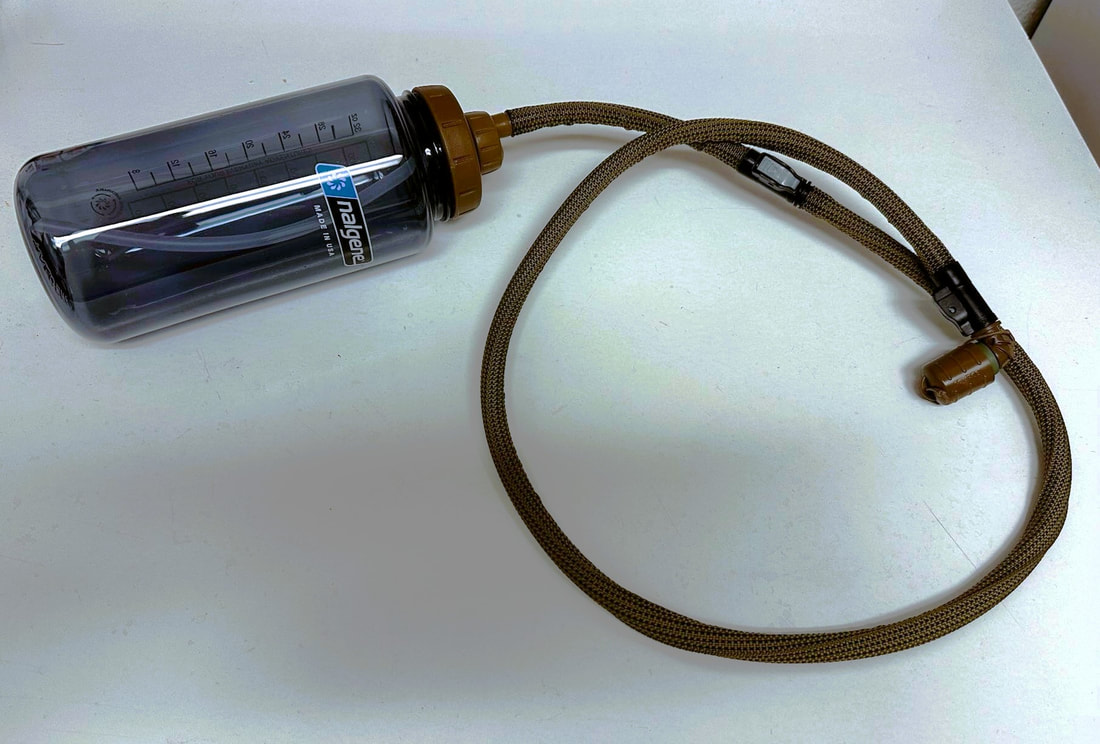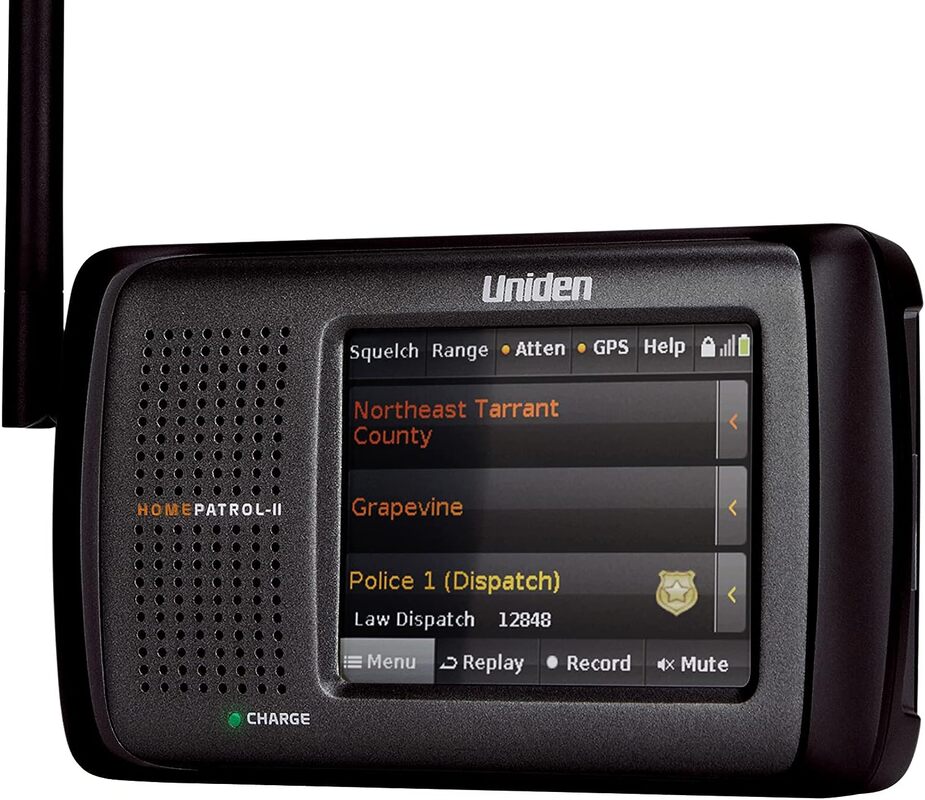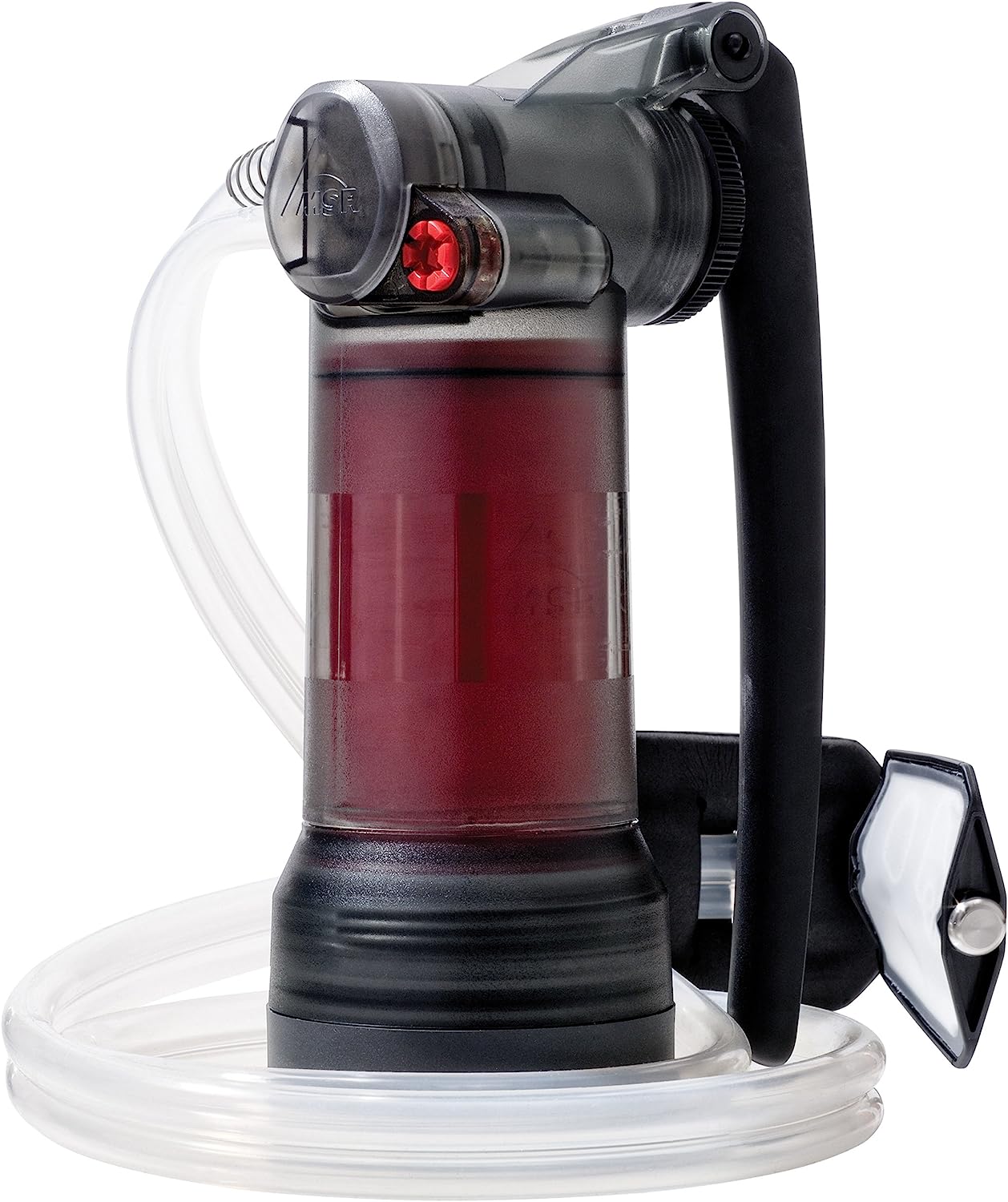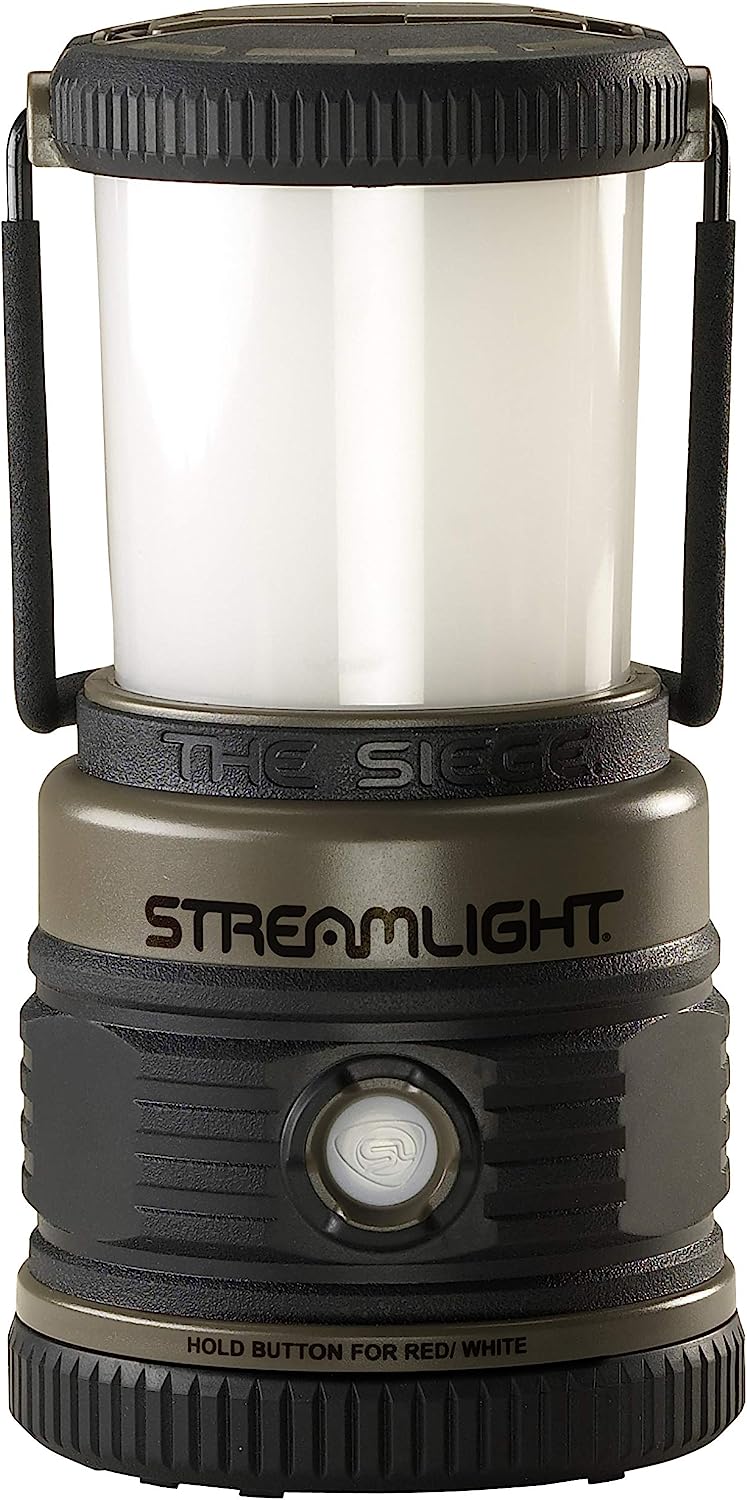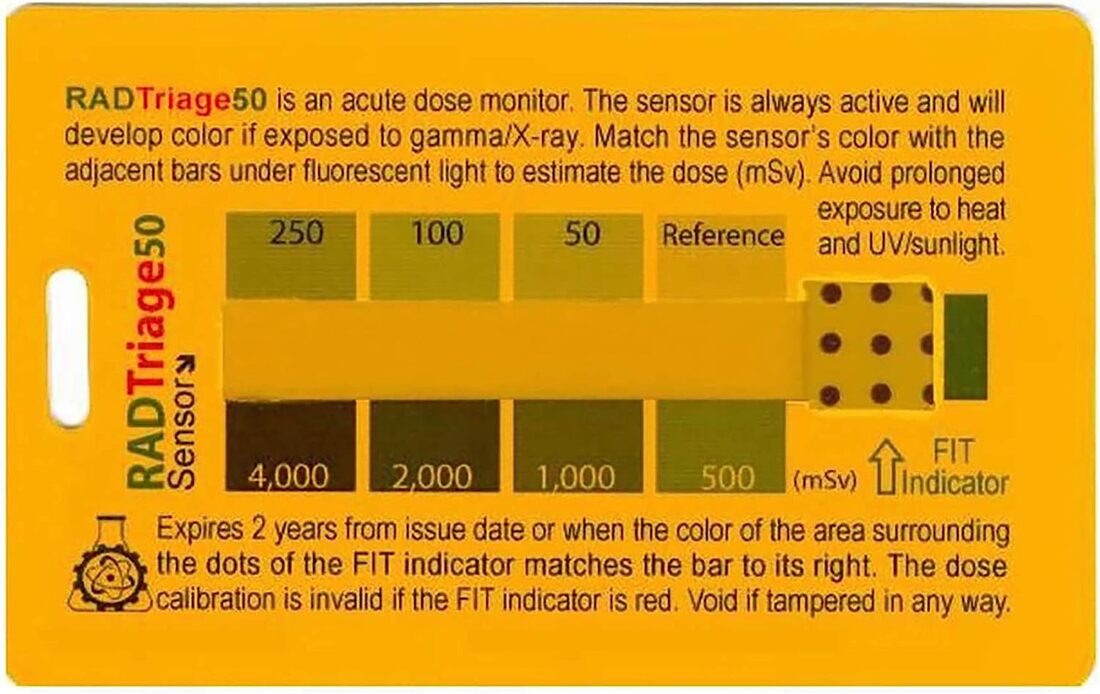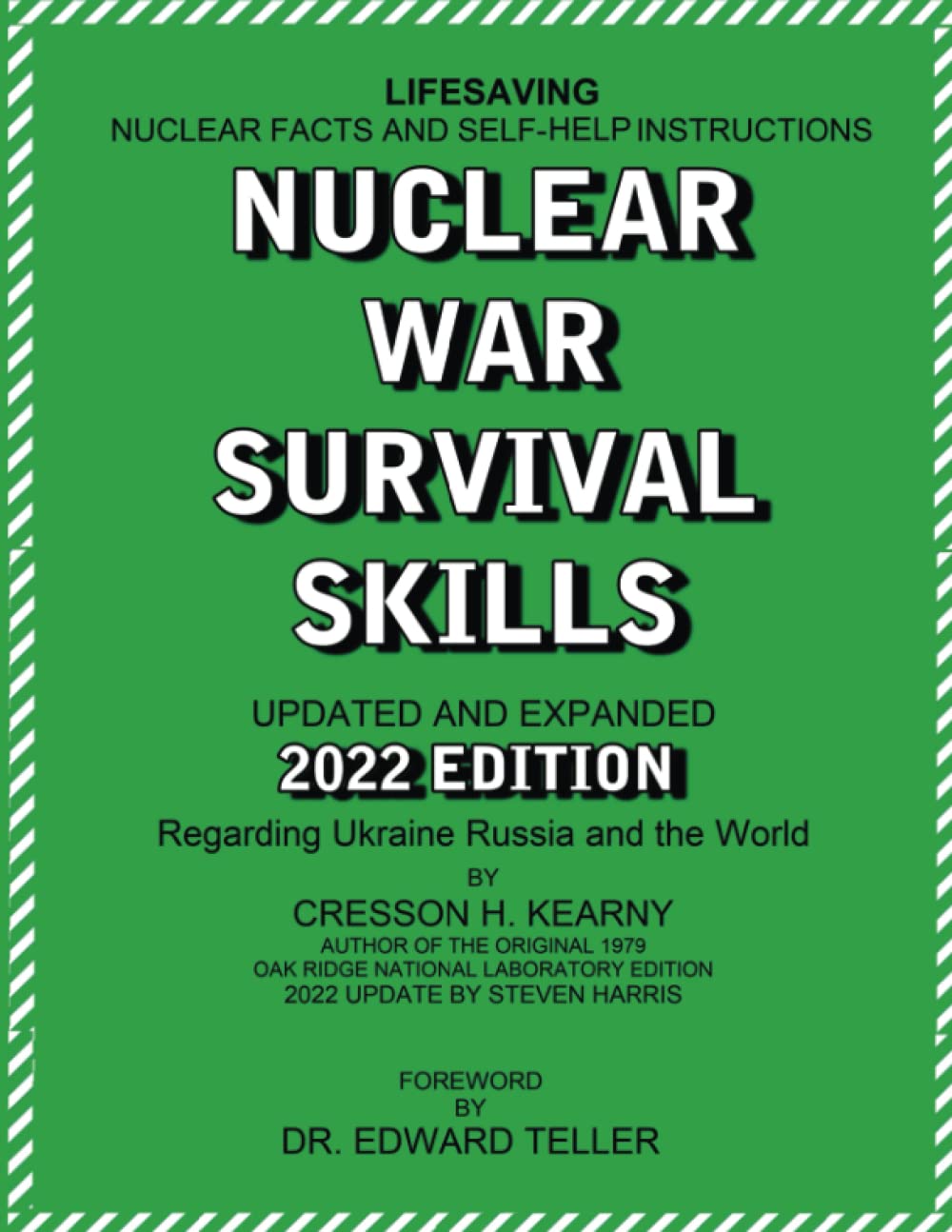|
Wouldn’t it be nice to have an Armored Personnel Carrier (APC) for your defense force to fight from? A gun truck does two things; provides an armored platform for fighters to shoot from (on the move, if necessary) and serves as a delivery vehicle for your troops.
What differentiates a gun truck from a technical is that a gun truck is carrying men, who will fight from the truck bed or on foot, using rifles. A technical is generally a vehicle mounted and mobile heavy weapon, like a medium to heavy machine gun. As said earlier, the problem will be sourcing weapons that can be mounted, so we’re using the humans in the gun truck as the gun mounts. The easiest way of making a gun truck is putting several guys in the bed of a pickup truck. They can shoot from there and then jump out to fight. An unmodified pickup bed will require your men to be seated so they don’t fall out. This limits their arcs of fire and the number of men who can safely fit. Three men should be sufficient to cover both sides and the rear of the vehicle. With a heavy-duty truck, some steel, and fabricators the possibilities increase. Probably the best vehicle to have to break up an ambush or provide serious fire support against a bad guy’s attack would be an armored vehicle. One of those roaring out of the darkness and opening fire with machine guns, grenade launchers, and even cannons would be a gamechanger. It is a mobile defensive position that can go where help is needed. Like as a technical is a substitute for a military fighting vehicle, a gun truck is a substitute for an armored personnel carrier. Obtaining an APC is not going to happen for most. What you can do is create a gun truck to not just transport a number of shooters but allow them to fire on the move and with relative safety. Gun trucks are non-passenger vehicles filled with guns and shooters used to provide a base of fire and increase the firepower available to defenders. Being a truck, it’s mobile and can move from locations quickly while shooters are firing or it can participate in a convoy. Gun trucks are usually flatbed vehicles modified to support shooters in the cargo area. In a civilian context, shooters firing rifles in the truck bed are going to be more common than mounted crew-served weapons. These really took off in Vietnam when supply convoys were ambushed. Modified 2.5-ton or 5-ton cargo trucks could quickly advance down a convoy column and return fire into the thick of it. These trucks had armored plating added on. Many farm trucks can be similarly modified to provide light armor protection and a good platform for shooting out of the cargo area. Mexican cartels do this to make their own improvised APCs and gun trucks, called “Monstrosos” or monsters.
Tactics Dragoons are mounted troops that got off their horses to fight, unlike the cavalry that fought from horseback. Pretty much all your fighters will be on foot. Whether people arrive via auto, ATV, or horseback, they will have to park their cars somewhere. This place should be behind cover and you will need someone to guard the vehicles. For example, cops always have vehicle guards at riots and when breaking up large parties. An unguarded vehicle is theft, vandalism, or sabotage waiting to happen. If gun trucks or technicals are used in a convoy, deploy them where their firepower makes the most sense. This may be the center, the front, or the rear depending on variable factors. These are the ideal vehicles to stop and provide overwatch at a potential ambush point as the rest pass. Up close, armored vehicles have poor visibility and weapons traverse. While this is a problem with traditional military vehicles, it is not so much for civilian vehicles unless they are so armored that visibility and firing angles are impaired. Typically, tanks and such are always accompanied by dismounted soldiers who can protect against enemies getting too close and deploying mines, “sticky bombs,” or rocket launchers.
Note: this an adaptation from my non-fiction book Poor Man’s Air Force: A guide to how small drones might be used in domestic unrest or low intensity conflicts, available on Amazon.
In the above tweet/video, a solider is sitting beneath a tent/shelter in an open network of trenches. The trenches appear to be well-camouflaged below the horizontal line of sight against a ground observer, but this isn’t 1901 and the drone threat in Ukraine has been obvious for well over a year. What we see is (probably) a quadcopter spotting for a loitering munition (think of a small cruise missile), which then flies a terminal mission right into the shelter.
As I said in my article “Lessons from the Drone War in Ukraine,” situational awareness is the key to staying alive. “Up” has to be considered a threat direction. Russian troops exhibit continual failures to take the drone threat seriously by neglecting to post air guards and properly camouflaging their positions. Something does seem odd about how much the shelter and solider stands out, so I will speculate that this may have been agitprop or a dummy position. Who knows? But let’s take it at face value for the lessons that can be learned. In short, air guards, camouflage, and overhead protection is mandatory in a UAS (unmanned aerial systems) environment. Open defensive works like trenches are horribly obvious to aerial observation. The lighter, tan earth clashes with the green of the ground cover or the darker topsoil in winter or of plowed fields. The size of the network also makes it easier for the enemy to locate them from the air. Once located, the actual fighting positions and men inside are easy to locate. Remember that drones can loiter lower, slower, and more persistently than a helicopter can. Even if the men have removed themselves to natural concealment outside the network, a patient hunter-killer drone could search those hidden men out and drop a grenade on them. Frankly, I’d like to see the data on UAS attacks vs. conventional artillery and ground attacks to see if the risk of old fashioned trenches is worth the risk of such exposure. Positions should be sited in deep shadow, beneath tall tree canopies, and deep in undergrowth. Out in the open just makes the excavation easier to see. Space positions and any objects in an unpredictable, irregular pattern. Vary the spacing, alignment, and coverage so obvious patterns are not created that may draw the eye. The foxholes and bunkers in the videos are well-protected from long-range small arms fire and moderately protected from artillery fire. However, they offer no overhead protection and are poorly camouflaged. There are three factors at work: 1, the position is open to allowing a munition in; 2, the blast protection is inadequate; and 3, the camouflage is inadequate. Trenches are a thing of the past. They are way too obvious and are easily spotted from the air. Their size makes effective camouflage difficult. Likewise, fixed fighting positions are equally vulnerable, though probably safer than a trench network if the position is small, well concealed, and camouflaged properly. Cover trenches, foxholes, and other positions with camouflage netting at a minimum. If hard cover (sandbags, earth) can’t be used, use blankets or other suitable materials to create a thermal blanket beneath the visual camouflage layer. Use camouflage tarps with low-shine and cover them with either “cabbage patch” type netting or cut foliage. If using cut vegetation, ensure that it is replaced as soon as it begins to wilt or brown. Place it as naturally as possible as if it grew there but even tree boughs laid across a hole is better than nothing. Vegetation should not be cut so much that it is conspicuously absent, or the signs of cutting are obvious. Shelters need to be dugout for both camouflage (especially in winter) and overhead protection from air-dropped grenades and bombs whenever possible. Camouflage or hide both interior portions (sandbags, walls, etc.) of the sides and bottom of any trench, foxhole, or other excavation including the bottom. Shoring or wattle is distinctive and the color of the soil contrasts with the ground surface. If using an earthen cover, carefully blend the dirt or replace the sod so the ground does not appear to be freshly disturbed. Plastic sandbags are known to shine in sunlight and need to be covered with earth or mud. Burlap sandbags should be used instead. Remove spoil from the area or disperse it thoroughly. To be effective, overhead cover has to be able to withstand a warhead impacting directly. This means thick enough to absorb a blast, able to support the weight of the overburden, and strong enough to not collapse when there is an explosion. The roof needs to be stout enough to support several feet of earth or sandbags. The standard should be for protection against mortars and grenades. US Army field manual FM 5-15 is obsolete but still offers good advice on how to build sturdy fighting positions. FM 5-15 recommends a minimum of 18” (15-20cm) of logs, sandbags, rock, and dirt for overhead protection. 6” (10-15cm) logs are recommended with a 1ft (30cm) overlap on each side of the excavation. This will support 1-1.5ft (30-14cm) over overhead earthen cover. Stabilization and supports may be needed. It notes that this will not protect against direct hits against mortars or artillery, which could be analogous to loitering munitions versus dropped grenades. I don’t have access to the terminal velocity of a conventionally fired mortar bomb to compare it to the velocity of a drone-dropped mortar bomb, but I’d gather a merely falling, versus a fired bomb, would have less penetrative ability. Vertical openings to the sky are dangerous; horizontal ones to the ground less so, although an explosive detonated just outside the opening can send shrapnel inside. “Bomber” drones are accurate enough, owing mostly to their ability to precisely position themselves, to drop explosives down chimneys. Chimneys must not be open to the sky and if they are, should have some sort of grate to eliminate the possibility of anything being dropped in. Entrances need to have barriers in front of them. An open excavation allows the grenade to drop right in. Blast-resistant overhead cover is needed for fighting positions and blast deflectors or 90° angles are needed at horizonal entrances. Proper camouflage clothing that blends in with the ground from an aerial perspective is needed. Vertical camouflage must change to reflect the same attitude as for horizontal camouflage. Positions should not be detectable above an altitude of the treeline (ex. 50 feet/15m). When winter comes and deciduous trees drop their leaves, concealment and camouflage must be adjusted to compensate for the lack of a tree canopy.
Note: this an adaptation from my non-fiction book Poor Man’s Air Force: A guide to how small drones might be used in domestic unrest or low intensity conflicts, available on Amazon.
Bare-legged Rhodesian soldiers have become a meme among certain segments of the Internet. Some like the look, others, like Tactical Wisdom-series author and Marine Joe Dolio call them a major health hazard in combat/SHTF. Joe doesn’t actually hate cargo shorts, but he considers them a liability and vector for injuries/infections in combat. I agree. I’ve hiked through rough terrain in shorts and have torn my legs up badly. My father came very close to a potentially life-threatening illness due to wearing shorts in inappropriate conditions. Do you really want to go prone on jagged rubble with unwashed skin that’s been going through an apocalyptic hellscape? I’ve suffered from whatever the western version of chiggers are twice and I can’t imagine how much worse a staph infection could be. While Rhodie-style shorts may make for good morale and propaganda, they do pose a serious concern for injuries and infection. Joe emphasizes a focus on basic first aid, not to detract from traumatic injuries, but because the focus on treating “minor” wounds early has been lost—we’ll see later why that’s important. A small cut we might brush off today in a relatively clean garage could be a nick in the field that easily festers and becomes deadly in SHTF. Prepping author and Siege of Sarajevo survivor SELCO reported that unwashed clothing became a similar vector for infection. People who hadn’t bathed or laundered their clothing for months carried high bacterial loads on their skin and in the fabric. Wounds would then almost be guaranteed to get infected. Remember that the environment was grid-down, so there was no proper plumbing or sanitation. But let’s talk a little bit about those men in the ‘70s with short shorts before we go any further. For those who don’t know, Rhodesia (now Zimbabwe) fought a war against communist-sponsored black guerilla-terrorists who were attempting to overthrow the white majority government. The white government knew what a s—t show would result if black communists took over (see the history of Zimbabwe and Robert Mugabe). Western economic sanctions over segregation and the unilateral declaration of independence from Britain lead to the state becoming a pariah. Despite the political troubles, the beleaguered Rhodesian army was effective and legendary. The photo of a patrol crossing a river in shorts, brushstroke camo, and with FN FALs carried at the ready has become an iconic image of the war. African terrorists had names for Rhodesian troopers like “ghosts with white legs.” Short-pants among Commonwealth soldiers in the mid-20th century was not an unusual bit of kit. While not issued to troopers, the classic brushstroke shorts were often made out of standard camo pants. But why shorts? The only cool factor was temperature wise, the plague of Instagram not being a thing yet. Comfort appears to be the number one issue due to the high temperatures. For example, Selous Scout often wore “trainers” (sneakers/tennis shoes) instead of boots. In fact, some paratroopers chose not to wear ankle-high boots when jumping, arguing that the actual rate of injuries was low. Shoes were more comfortable and easier to be stealthy in. Comfort being the number one issue, some reported ancillary benefits from shorts even with the potentially injurious flora and upon human behavior. A hunter with experience in Africa reported that long pants were caught by thorny plants. This caused delays and noise, so he preferred to accept the scratches. The theory on thorns is that although they do cause scrapes, they do not become entangled in skin as they would with cloth. He was not alone in this opinion. A Selous Scout officer once said the inherent danger of shorts in the bush enforced stealth and caution. Quick, rash movements not only made a lot of noise but would result in injuries. Training of course is best but risking a gash in the leg apparently reinforced care in walking. Seems a bit like the reasoning behind the three-round burst on the M16A2, eh? As the Scouts transitioned away from primarily tracking to more anti-terrorism and direct action roles, the shorts were replaced in the field by pants. Rhodesian “troopies” took pride in minimalism and toughness, so this may have been a factor in the popularity of shorts beyond comfort. Yet all good things must come to an end. In 1977, shorts were forbidden for the Rhodesian Light Infantry (RLI) on operations. Sources report that this was largely obeyed, unlike the above boots order. I spoke with Civil Defense Manual author Jack Lawson, himself a veteran American volunteer, who confirmed the transition at least in practice, if not by command. However, it was green shorts that faded to a bluish color in the sun, not camo. A transition was made to jumpsuits and Lawson transitioned away from “the naked body” style of uniform due to hypothermia in early morning helicopter rides (G-Cars). But are shorts a good idea to wear in combat or SHTF? Probably not, although the Rhodesian reasons for wearing them initially, were not slapdash ideas. Shorts aren’t terrible things to wear; I prefer them when doing general outdoor activities because of greater airflow to my bits, hence less sweat, and greater cooling due to my exposed legs. On the other hand, I often trample through the “bush”; creosote, Manzanita, and sagebrush. I have scars from cutting my legs on stuff. Snakebites are a constant concern, although I’ve only ever encountered a rattler twice (knock on wood). Once I came back from a hiking vacation and my young niece got worried I’d seriously hurt myself due to the amount of minor wounds I got from a particularly nasty off-trail bit. I looked pretty rough. Recently I learned my dad has had some serious health problems. Chronic cellulitis had come very close to turning septic and gangrenous. It was so bad he wouldn’t let me visit because he was afraid his legs were literally rotting away like an unmanaged diabetic. A hospital stay and nuke-it-from-orbit levels of IV antibiotics later, he’s finally on the mend. He’s feeling better, optimistic for the first time in a while, and expected to make a full recovery. Why did this happen? He lives in a very humid area on a rural piece of property where his main hobby is landscaping. Unfortunately, part of the land is a swamp infested with blackberry vines. Working in thick brush and thorny vines cut his unprotected skin up, allowing infections and weird stuff to go on in his legs. Like a typical man, he did not get this stuff properly treated until it was bad. Of course, proper medical care early on would have stopped it from getting as bad as it did. However, in a civil war/SHTF there is likely to be very poor to no medical care. High doses of mega-antibiotics will be a rare thing, so injuries are to be avoided. Infection has probably caused more fatalities in wars than actual battle. Untreated infections with austere conditions with all sorts of unknown contaminants can cause huge problems. In my dad’s case it was just cow dung and general Pacific Northwest waterborne contaminants. Post-SHTF, it could be major diseases, including “exotic” ones imported by the foreigners pouring across our undefended southern border. Imagine going prone on a rocky surface in a firefight and surviving unscathed, aside from a bloody abrasion to the knee, only to die in a few weeks from septic shock. Apart from the Commonwealth, operational use of shorts seems to be slim or exceptional. Kris “Tanto” Paronto, wore shorts during the fight in Benghazi because “If I was going to fight, I was going to fight comfortable.” One interesting contrast in protection is the Brazilian Army’s Caatinga troops. The Caatinga is a semi-arid desert filled with spiny and thorny plants, not unlike the Sonoran desert of southern Arizona. This unique military unit wears tough, full-bodied denim uniforms reinforced with leather complete with gloves. Shorts may feel comfortable up to a point, but if it’s too hot, like over 100°, exposed skin is letting the heat in. If you visit Las Vegas or Phoenix, you’ll notice police officers wearing full length sleeves even in 115° heat. Yes, sunscreen has reduced the need for covering the skin in the summer sun, but heat control is more important in very high temperatures. One could always compromise (especially if there is a breeze) by wearing lightweight, but long sleeves. As for sun protection, will you have the ability to apply sunscreen in combat conditions, especially where sweat and water crossings may wash it away? I chose to wear a campaign hat on patrol because if I was going to be outside for a long time, such as doing traffic control, I wouldn’t be able to apply SPF 50 (over my SPF 15 lotion I put on in the morning after shaving). Also, the scent of sunscreen is highly distinctive and could give away a concealed fighter to an astute tracker. Unfortunately for the guys who want to look stylish by channeling their inner “troopie,” shorts are contraindicated in SHTF. You’ll stand out and your white legs will give you away in the underbrush—are you really gonna camo stick your legs or rely on getting a nice, dark tan? White skin can be highly reflective, camouflaged or not. The dangers of insect bites/stings, thorny plants, scrapes, cuts, and sunburn aren’t worth it. A grid-down world or one where you can’t just go to a hospital will result in minor infections becoming major, life-threatening ones. Save the brushstroke nut-huggers for the barbecue and wear some pants. Joe Dolio’s Tactical Wisdom series is a set of manuals that far surpass what the average US military field manual has to offer. His upcoming TW-5 will include a section on first aid. Visit his website at www.tactical-wisdom.com and follow him on Twitter @dolioj.
Don Shift is a veteran of the Ventura County Sheriff's Office and an avid fan of post-apocalyptic literature and film. He is a student of disasters, history, current events, and holds several FEMA emergency management certifications. Visit www.donshift.com and consider supporting him by buying his book Rural Home Defense, which includes a chapter on lessons learned from the Rhodesian Bush War. I'm conducting a summer-long study of water-related gear. I've seen y'all in the Twitter and right-wing gun nut spaces tout various products and I'm putting them to the test. They are:
MSR GuardianThe MSR Guardian is a virus-rated water purifier. If you need to know more about it or want the specs, go read them on Amazon. It's big, like the size of one of those large cans of baked beans or a giant can of beer. It's not particularly heavy. The shipping box is stout and I suppose it could be used as a protective case. I went with this instead of the smaller MiniWorks because I want protection against waterborne viruses and I liked the handle operation versus the bike pump of the Katadyn. I tried the LifeStraw water bottle in the past and it was like sucking a golf ball through a garden hose; hard pass. I intend on testing this at desert lakes and in the Sierra, including swim beaches at popular lakes. About viruses: Hydrapack StashSomebody, probably a Ranger, suggested the Hydrapack Stash as a collapsible canteen. I got some "collapsible" bottles for Christmas but they were soft-sided versus being able to crush down like a soda can. I really wanted this for empty-pack space saving, especially on the way out. This I can fill from the tap and carry full or fill in the field from the purifier while saving space when not in active use holding water. I don't think this will be all that complicated, but I suspect durability and taste could be factors. Conveniently, it screws into the bottom of the MSR. Nalgene and Human Gear Cap CapOne of the problems with Nalgene bottles and their clones is the extremely wide mouth, which is why I never used the brand name ones. Open the lid and if you're not careful taking a sip, you end up splashing water down your face. Okay if it's hot and you have lots of water, bad if it's cold or you have little water. I do hear that in the Antarctic everyone who goes out on the ice carries one of these to pee in so the urine doesn't contaminate the pristine environment. Of course, I'm told Nalgene is nearly indestructible and the gold standard of water bottles in the wild. Problem is, they don't collapse (see above). To get around the splashing problem, enter the humangear CapCAP+ (if you want the proper name). Basically it's a lid for big opening with a smaller screw-top above that that will replace the OEM Nalgene lid. Advantage? It gives you a sipping/pouring sized drinking hole. Yes, you could get one of those suck-top bottles but I feel too much like a baby to use something like that and I hate having to clean off soft drink container lips like that. Give me hard plastic that's easy to sanitize and wipe down. I'll let you know how it goes. Read my new book, The Dad With a Flamethrower. Unlike the protagonist in the novel, you have access to Amazon shipping. Here's what they legitimately sell online (Prime shipping may not be included). https://amzn.to/3qDYfhU
The Dad With a Flamethrower is now in print and available for sale! It's a novel that looks at fatherhood and modern suburban masculinity through the post-apocalyptic genre. Below is an excerpt from the first chapter. Excerpt from Chapter 1: AirportRoss, you have really poor timing when it comes to vacationing, my inner voice chastised. Imagine the worst riots in US history occurring at the same time a massive polar vortex struck, causing a vicious freeze-then-flooding disaster a month before the most contentious election in American history. That’s what was waiting for us after we landed back home in the great western state of Fremont. All the bad stars aligned just right to cause a perfect storm of environmental and human conditions for a near-collapse scenario. Man, it was cold. Florida’s 80° temps in early October were lovely but unfortunately the daytime high back here was only half that. You’d think being a hairy, slightly overweight middle aged white guy my genes would have been perfectly adapted for these far below-normal autumn temperatures. Nope. “This must be how Canadian tourists feel coming home,” I said as my family and I shivered in the cold on the airport sidewalk. We had just deplaned after two weeks in Florida hitting the beaches and taking our girls to spend a week with The Mouse. We knew a cold weather anomaly had hit the southern midsection of the country, but this was a shock. No one expected to deplane into essentially martial law and a disaster zone. Normally one of the busiest airports in the country, River City International was eerily dead. The last time the taxi stands were this deserted was after 9/11. “It feels like The Langoliers movie,” my wife Raelene said, referring to the Stephen King story where an airplane travels back in time to a yesterday devoid of all life. As in the story, the scene was unsettling, but not a supernatural kind of sinister. Real-life was probably more frightening. Raelene and I had been married for seven years now. She was a traveling trauma nurse on an extended sabbatical and I was a software developer turned junior executive. We had a history of interesting vacation weather. Hurricane Emily made a guest appearance from afar not long after our wedding. Those rainy last two days of our honeymoon from the hurricane were charming compared to this. “Daddy, I’m cold,” Reya, who was seven, said. “Sorry, honey. Rub your arms.” It must have been in the high forties at sunset when it should have been 65°. Orlando was still having shorts weather so none of us had any jackets. I glanced at Remy, our two-year old, who wore her blanket like a cape. “That’s the second Uber to cancel,” Raelene said. She looked up from her phone. “If we don’t get a cab, I’m unpacking her bag and getting her long sleeve shirt out.” “Then let’s walk down to the next terminal.” A few cabs were parked over there. With the two kids in tow we barely made it to the sole minivan before a group of four businessmen did. “Where is everybody?” I asked the cab driver. “Man, ain’t you been watching the news? Nobody wants to fly in here thanks to the Big Freeze and all the riots. This is Hurricane Katrina bad. Probably worse,” he mused. We had been watching the news, particularly The Weather Channel, in the hotel because a tropical system was moving in on Florida. Since I was a techie, I was usually all over the Internet and on the bleeding-edge of the news, but not on vacation. My brother Grant let me know about riots in his medium-sized city of Red Rock in the rural north of the state—started by a police shooting of an out-of-towner—and we caught some coverage of what was being called “The Big Freeze” on CNN. What we were learning was that the media had been downplaying everything that was going on. You may remember the storm-of-the-century cold snap Texas had not long ago. Fremont was experiencing something like that, but worse. This time the power grid did fail statewide. Powerplants were still trying to figure out their “black start” procedures while the national grid operators scrambled to send excess power in. We saw it all on the news, of course, but to us being so far away in Florida it was like it was happening in a different universe. My brother drove downstate and did some quick winterizing for us so we enjoyed ourselves knowing that everything would be fine by the time we got back. However, like everything since COVID hit, this Big Freeze had second and third order effects no one anticipated. Since the entire region was affected, there was little help to send in from other states. Refineries shut down causing a gas shortage. Transportation delays led to stores, already emptied ahead of the freeze, meant that food wasn’t coming in. Since the election was less than a month away, that combined with racial tensions and some unfortunate police shootings pushed things over the top. Riots developed and these were way more than the violent pre-election protests that had been happening since summer. Riots go with looting the way that destroyed mobile homes go with tornadoes. While there was plenty of opportunistic looting for pecuniary or material gain, much of it was focused on getting necessities. In the early days, hungry looters ignored places like Best Buy and went to supermarkets. One loaded cart running out the grocery store door served as a catalyst for many more to follow in a stampede. Closed restaurants were broken into for food. As the police’s ability to cope waned, the scope of the thefts changed from substance to the pillage of the free stuff army. Looting was so bad that the National Guard was still deployed in a police capacity across the country. There was an armored vehicle sitting on top of the airport parking garage for crying out loud. It wasn’t just in River City, either. The entire Metro area of the state was dealing with the same thing and so were almost all the big cities across the county (minus the weather effects). The fractured politics of our nation had given us another riotous “summer of love” that threatened to spiral into a real civil war. Even my brother in the medium exurb of Red Rock City was embroiled in the unrest. Red Rock, about two hours north, was pretty bad from what he told me. Refugees from the cold went up there from the cities and overwhelmed the locals. Looting and riots developed. Then Radical Community Reform, RadCom, activists (who had to change the official name because people started using it “negatively” and assuming that “com” referred to communism, which “seemed” bad to the official organizers) moved into inflame and exploit the situation. My brother called it a “literal communist revolution," which I thought was a bit extreme, but if terrorists were trying to blow up the regional powerplant—and they were—there could be a problem. The reality here in River City was a lot different on the ground than the news depicted. I half anticipated the plane coming in high and fast to avoid gunfire and smoke from burning buildings when we landed. The streets looked quiet beneath us as we came in on final approach. Much of the snow was gone, too. The effects were subtle. The city was shrouded in an unsettling and deceptive tranquility, masking the severe distress beneath. The fallout so far seemed to be most of the airport concessions being shutdown and a lack of traffic. “Where to?” the driver asked. “West River City.” It was on the west bank of the river that split the state and our metro area which was the oldest satellite city of the area. Our suburb was on a large island made by the main channel and a backwater ship canal. “It’s almost dark, so do you want me to avoid downtown and take the beltway? I gotta warn you the trip will be double the price if you do.” “What’s the problem with through downtown? It’s the shortest and fastest way.” He looked at me as if I had a horn growing out of my head. “Some folks don’t want to go through downtown at night. With the curfew and all we’ll be fine coming from the airport but its not the police they’re worried about.” “Just get us home the fastest way, please. What are they worried about?” “You’ll see.” The fifteen mile trip from the airport to downtown that usually took half an hour during rush hour was done in less than half that. The cab driver was speeding along the empty freeways. I knew that there had been riots, protests, and gas shortages but the near solitude that we had on the highway was disorienting. The skyscrapers loomed up from above the sound walls. Except for their red anti-collision beacons, all the commercial buildings were dark. Even the residential towers showed a minimum of lights. Were the blackouts that bad? Without warning, two cars going close to 150 MPH (the taxi was doing about 90 itself) shot by us on either side with a whirr and blast of air that shook the van. "Whoa!" the driver exclaimed. The cars were a half-mile away in ten seconds. “Yeah, that’s a thing since the state troopers are too busy to chase speeders. Damn racetrack out here.” Beyond the retaining wall the glow of fires illuminated the city. Columns of smoke rose up in several places. Red and blue emergency lights flashed here and there. A police helicopter circled east of downtown shining their spotlights like the heat-ray of the Martian tripods in War of the Worlds. Raelene and I shared a concerned look. “Here,” the driver said. “This is what I was telling you about.” The headlights showed a massive patch of blackened pavement about a hundred yards long that stretched from the fast lane to the exit ramp. Scorching and soot went halfway up the freeway walls. “Protest shut the freeway down. Rioters came up the ramp here and scared everybody out of their cars. Then some arsonist came along and started chucking road flares in the windows. Fire department couldn’t get here so like a hundred cars burned up. Freeway was closed for two days.” I felt like Marty McFly in Back to the Future Part II when he arrived in the paradox version of Hill Valley. Our town had, in the span of less than two weeks, turned into a city of perpetual night where mischief reigned. We had only been on the ground for an hour and I felt we had fallen into a world designed and stage managed by the director of a dystopian blockbuster. “Uh oh,” the driver said. A man was running down the shoulder of the freeway. In a moment we saw why. A semi-truck and trailer was stopped with two pickup trucks backed up to it. Six or seven people were rushing to unload boxes of what looked like vegetables into the pickups. Some carried guns and were standing guard. One person might even have been shot. Raelene gasped. The cab driver floored it. “Told you that y’all might wanna have taken the beltway.” “What are they doing that for?” Raelene asked. “Nobody got no food. Grocery stores are closed ‘cuz that’s happening if people just don’t steal stuff the minute it hits the shelf.” Grocery stores being empty? The idea sounded preposterous to me. Shortages were part of the new normal, but empty was impossible. “Do you have food?” Raelene inquired in follow up. “Us? Yeah we got lots. We were smart and stocked up ahead of the store. No EBT cards in our family. Course we ate most of the freshies now and are eating out of cans ‘n stuff, but it beats being hungry. Ate vegetables out of cans for most of my life. No ma’am, we’re not French toast people.” “French toast people?” “You know, the ones that run out right before a hurricane or whatever and buy all the milk, eggs, and bread, like they’re going to make it into French toast and live on that alone. On TV all they show you are empty shelves—no milk, bread, and eggs. Never go down none of the other aisles. When the power started going out, we bought ourselves steaks. Bunch of ‘em real cheap ‘cuz they gotta be refrigerated, even if the heat is out and the store is cold enough. Paid cash and ‘bout filled up a shopping cart.” All the talk of food was making me hungry. I hadn’t eaten a meal since breakfast. There was a delay in taking off, so we bought the girls McDonalds in the terminal back in Orlando. Raelene and I ate snacks on the plane and hoped to get a bagel or something when we landed but we were lucky to get a coffee from Starbucks. “What else did we miss?” I asked. “Well, they got the curfew on. Can’t go out dusk to dawn, but that’s not stopping anybody from stealing or breaking in. The protests have stopped. The college kids who started it got scared when the rioting and looting started. Not like up there in Red Rock or in Portland. Get a whole bunch of hungry, cold, and scared people out in the street yelling and screaming then be surprised when they start stealing and burning stuff? Pinko idiots, as my dad woulda called them.” I did see something on the news about various activists leading initial protests against the horrible disaster response by the authorities and governor. A big march in the snow went from the state universities to the city hall or the capitol building. Thousands of people who lived in the cities and had nothing to do because they couldn’t go to work joined in. Once police became overwhelmed is when the massive looting spree began. It was the riots of 2020 and Hurricane Katrina combined. If you liked this excerpt from The Dad With a Flamethrower, buy a copy today!
If you have followed Forward Observer for a long time, you’ve heard founder Mike Shelby talk about intelligence and the “area study” a lot. You may have dismissed his consistent calls to the audience to increase one’s local situational awareness and his mantra “Do your area study.” I must admit that for an embarrassingly long time I didn’t understand what an “area study” is despite intuitively doing all the right things. For those of us who have lived our whole lives or for a very long time in one area, it is easy to assume that we know everything about our home regions. After all, we experience it day after day. The reality is the vast majority of people don’t have a highly-detailed knowledge of where they live. Rather, they feel that they comfortably understand the details and dynamics. Familiarity in this case has bred overconfidence. Overconfidence gets people killed. Intelligence being critical to survival is the central tenant of Shelby’s message and without it, and an area study, you stand a much greater chance of dying when SHTF. This is because you may have planned for the wrong threats. For example, in spring of 2020, how many people suddenly found themselves in the midst of looting because they lived proximate to a retail center? Without intelligence you are completely blind to the threat until it confronts you without warning. Most people may struggle with basic tasks like reading maps, researching natural and industrial hazards in their area, or keeping up with demographic and criminal trends. These individuals who refer to themselves as potential warlords in the event of SHTF may think of themselves as generals, but their mindset and approach is that of a private. A private wants stuff that can help him perform his mission better, but wars are not won through acquisitions of stuff; they are won through strategy. Strategy is developed through intelligence. The private is responsible only for following orders; a general is responsible for identifying and planning the mission. For an individual, there is not going to be a general or S-2 shop doing the work for you. What is an area study? An area study is zone reconnaissance; as more critical points or places of interest are identified, more detailed information collection becomes area reconnaissance. It is truly a “study,” not just a document. Ultimately, an area study goes beyond collection of data and becomes a thought exercise. What is an “area study”? In a grossly oversimplified nutshell:
Intelligence is information analyzed to answer questions. Without a baseline understanding of a problem, a threat, or an environment, there is an insufficient level of knowledge to even begin asking questions. In the context of history, I always explain my fascination with learning about the past (and the world) as turning on the lights in a dark building, revealing rooms and details that would have gone totally unnoticed in the darkness. An area study is about identifying and filling intelligence gaps—you don’t know what you don’t know. I made the mistake of thinking an area study was collating documents and information. It is, but rather than being just a file, it's recording what you are learning for offline use when you need a reference. If an area study was just writing down what you know about your home that may be useful when SHTF, it might rightly be regarded as just a gimmick. No, an area study is more of the process of learning than it is the final product. An anecdote This is where I have to add a personal apology: I blew off Mike because I failed to understand what he was getting at. If you are mistaking an area study as “just” a document, you aren’t alone. I literally wrote a section of a book describing “knowing where you live” without understanding that this actually was an area study in practice for like over a year. If you think that Shelby is overemphasizing the importance of intelligence your observation is not surprising, but it is incorrect. Much of the book is spent trying to convince the reader to conduct their study and explain why. It is easy to overlook the importance of intelligence. For most people, they are operating under a veil of benign ignorance. I will admit that for too long I simply didn’t understand what he was getting at, which may seem astounding coming from an author like me. Cops know their areas really well; it’s called beat familiarization and you get it out of books (binders in the briefing room if we’re talking analog) and firsthand. When relocating, many people look for “the good schools” and flood hazards. Generally, we do not perform a multi-hazard threat analysis that includes political and social factors, nor do we consider ordinal effects on the area due to a catastrophe (“ordinal effects”: second, third order, etc.). My advice in one of my books was to “know about where you live” and I described what I did naturally all my life out of simple curiosity. Most people do not spend hours pouring over maps or Google Earth. They do not look up demographic data or ethnic distribution in the racial dot maps (based on census data). Knowledge of crime patterns and gang behaviors are total unknowns to the average American. The general population’s understanding of their neighborhoods and regions are based almost entirely on experiential data; that which they live every day. One day Mike put some thing out on YouTube or something and it suddenly dawns on me what an “area study” is. It also dawned on me that in addition to being very dense, I don’t think like other people. What came naturally to me as basic curiosity or “fun” (I’m sure you have a different definition) is like pulling teeth to other people, hence Shelby’s aggressive exhortations. It blew me away to realize that this wasn’t something everybody did, which is why I thought Mike’s mantra was so unnecessary. It was a true light-bulb going off in my head moment; I am not like normal people. Normal people don’t play around on Google Earth, collect maps, or wonder what the demographic distribution of certain groups are in their place of residence. Normal kids don’t say “Gee, I’m bored. Let me thumb through the phone book.” That’s why it’s so imperative that you actually sit down and deliberately do this stuff. Part of the reason I was so oblivious was because I didn’t understand other people don’t have the same level of curiosity. Examining the psychology behind this tells us that even smart people are subject to cognitive blind spots. Most people know about where they live through direct experiential learning, that is, in their day-to-day lives. Very few people look at maps, satellite photos, or demographic data. They do not look at trends in crime. I’m sure it seems bizarre that a guy like me would fail to “get it” on why an area study is necessary or why it is imperative for a prepared citizen to do one. It’s almost laughable now that I did do area studies and think about the bigger picture but failed to connect what came naturally to me with what Shelby was talking about. It’s really embarrassing to admit because in hindsight it’s so obvious. Why you need to do an area study
In writing my post-apocalyptic novels, I have to consider more than just the inciting event itself. For instance, what challenges would real people in a similar situation, set in an alternate reality, face? In my case, I looked at the dominant power structures in my area which are: law enforcement, agricultural interests, and Mexican drug cartels. I had to wargame how these elements would react and interplay in order to develop a plot. It would be easy to mistake Mike’s constant exhortations as marketing his own products and services; it is not. When he harangues his audience to do their area study, he is begging them to critically evaluate their physical and social environment. Many of us assume that since we have lived in an area forever or a long time that we know all there is to know about it. Indeed you might, but there are reasons for conducting a formalized study and recording the results. First, an area study serves as a validation for our experiential knowledge against hard sources. Second, though it may feel like we are retreading the same ground, it is a valuable gap analysis process. Assuming you know everything can be a fatal mistake. Due diligence:
Third, it creates a permanent record to make this information permanent and accessible. Recording the information allows you to access things you may not recall immediately, preserve the results of your work for others, and have access to research materials offline. In my professional and personal education, I rarely relied upon note taking because if I couldn’t remember it for a test, how was I going to remember it in life? In real life, many instances have cheat sheets for complicated information which is what your recorded study becomes. I have had countless binders full of information that I read once or twice or referenced on the rarest of occasions. The point of collating this information is to serve as a quick reference and preserve it for others’ use. For instance, I can be a human encyclopedia about my AO but if I’m dead, my family or my partners can’t plug my brain into a USB port and run a file recovery program. The problems with the modern survivalist paradigm in Shelby’s view is that the average prepper does not understand the environment in which he lives and suffers from a critically small human network. Without gathering information to comprehend the nature and risk of various first, second, and third order threats survival planning can be done wrong. The consequences may range from the inconvenient to deadly. Furthermore to the second point, in a dramatically altered society, smaller human networks—individual relationships—will be vital for not only security, but commerce and social capitol. What Shelby is offering is, in his words, “second layer solutions” that increase survivability beyond the mere logistics of sustainment. This goes beyond just having backup in a fight or someone to barter with. Mutual cooperation reduces the ability for malign forces to exert control. Successful people get that way because they look for and exploit opportunities. Your weakness is a bad guy’s opportunity. If your plans are general in nature and you have no clear idea of who might be coming to get you, you are not prepared. Intelligence is planning for the guy down the street who constantly gets arrested getting out of jail, terrorizing the neighborhood, and one day becoming the capo for your local Mexican cartel. It’s not some general idea that people might try to steal your freeze dried food and having a vague idea of using your AR-15 to fight them off. You know what the reality is going to be for most people when SHTF? They will flock to whoever seems to have it together and either become slaves for safety or follow orders for survival/success. The strong man with a plan and the means to effect his plan will be the one who takes control. This is how bad guys like the mafia take over; they fill a power vacuum, offer safety, and vital services needed for survival. In some of my novels the battle for control centers around wells; water is life. Police struggle to maintain them as public resources and gangs want to control the wells so they can profit. European rivers and roads were controlled by bandit barons who extorted tolls on travelers, which harmed commerce, but absent a powerful central authority, they got away with it. Have you considered how bad actors may exploit resources in your area, including who these people might be, what those resources are, and how you can counter it? The book itself Army intelligence field manuals are very obtuse, and it is very difficult to apply the information in them to the civilian survivalist context. FM 2-0 and 34-3 made my brain hurt. Shelby parses the good information for you. He not only explains what information to look for, but why it is important. It is far more than a series of forms to fill out, though the book concludes with the outline for your own study. Some things I liked or noted: Book discusses basic concepts to intelligence analysis like the intelligence cycle. While many of us can do this process intuitively, it helps to understand the doctrinal aspects that can streamline and improve the efficiency and accuracy of the process. One problem Shelby discusses is the scope of the area study; a common problem he finds among some of his students is determining the size of the area to be studied. In effect, the area and borders are indeterminate, but the limitations on imagination are another matter. The study is the narrow to the broad, tactical to operational: Define the threat > define the mission. These two are reciprocal but not interdependent. A threat can be identified if falls within one’s mission (i.e. “hunkering down”) or a mission may evolve out of threat identification, or vise versa. Threat categories: Conventional, Irregular, Catastrophic, and Disruptive. The nature of the threat, not the situation. Disruptive threats are things or people that compound existing problems. What degree of trouble do they pose? I took this as the perspective of situations, rather than their effect. Specificity is important—without specificity and research threats become “yeah, I know, people are dangerous.” Broad assumptions create blind spots. I really like that he quotes Fritz and Mathewson’s five categories of problem people; even the recap of their work in this book beats my own grouping of people who will complicate life post-SHTF. Conclusion While documenting your area study is important, what Shelby is asking people to do is learn and think abstractly about their community. The Area Intelligence Handbook is a guide on how to do that research and what to consider. This book is a necessary part of the prepper/patriot crowd’s bookshelf. For those just starting off, I would recommend it be the starting point because it articulates why studying the geographic and human factors are important. It’s a book about identifying what exactly you’re facing, which will guide your defensive preparations, your gear acquisitions, and the skills you learn. The Area Intelligence Handbook Forward Observer Gray Zone Activity BUY MIKE SHELBY'S BOOK OR YOU ARE LITERALLY GOING TO DIE. |
Author Don ShiftDon Shift is a veteran of the Ventura County Sheriff's Office and avid fan of post-apocalyptic literature and film who has pushed a black and white for a mile or two. He is a student of disasters, history, and current events. Archives
May 2024
Categories
All
As an Amazon Associate I earn from qualifying purchases.
|
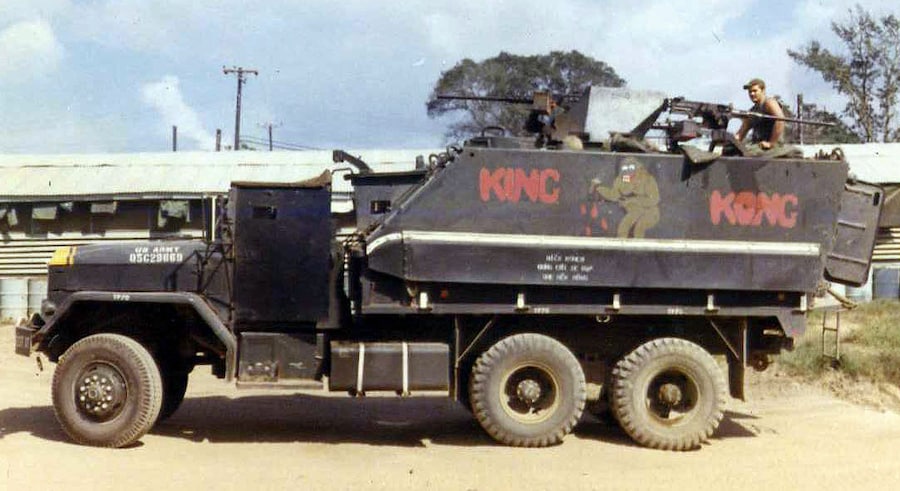
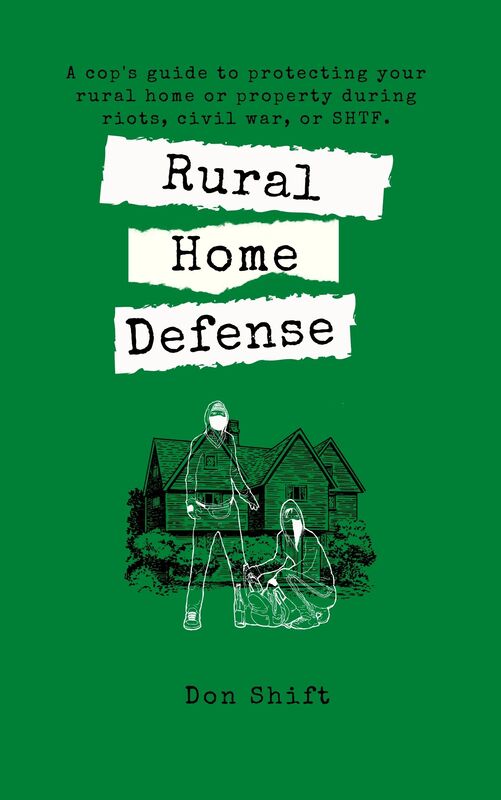
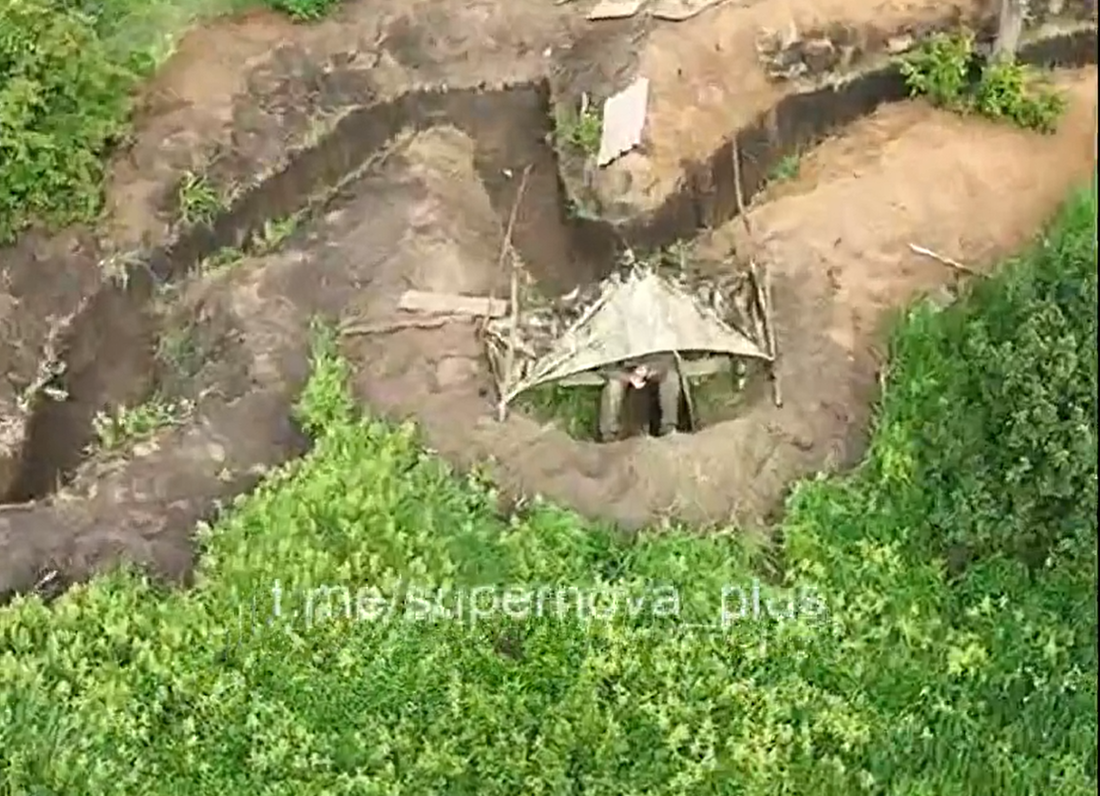
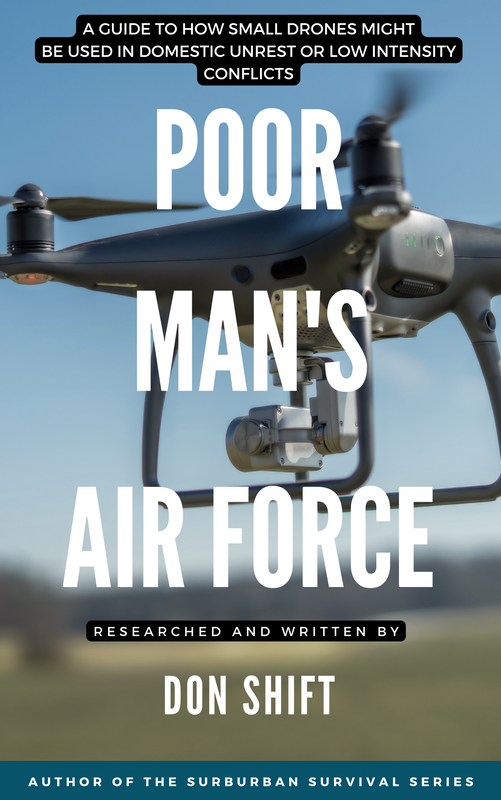
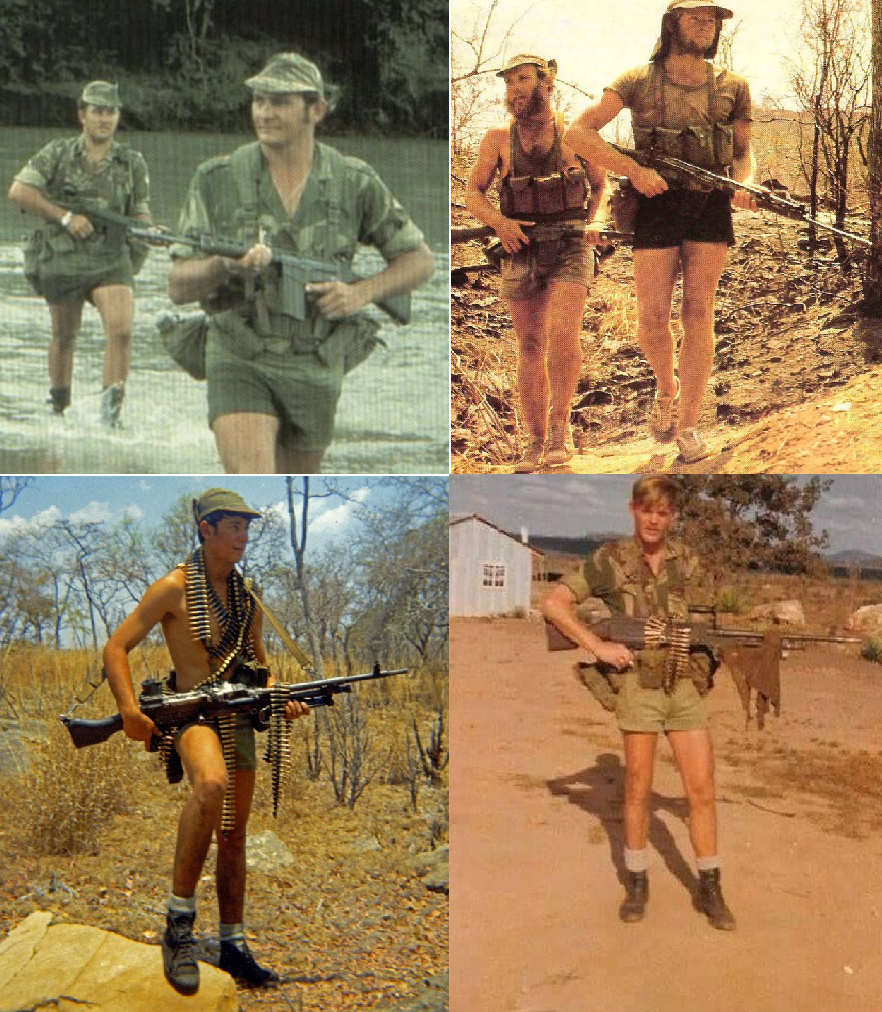
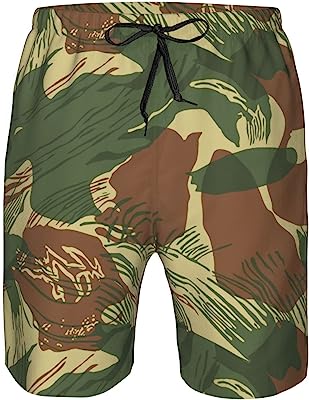
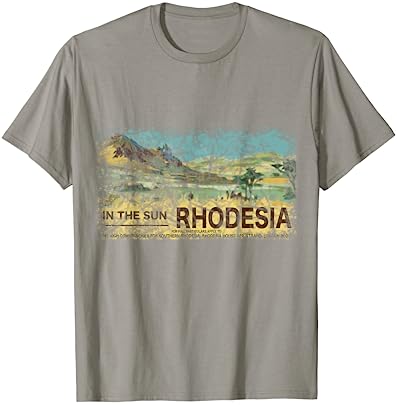

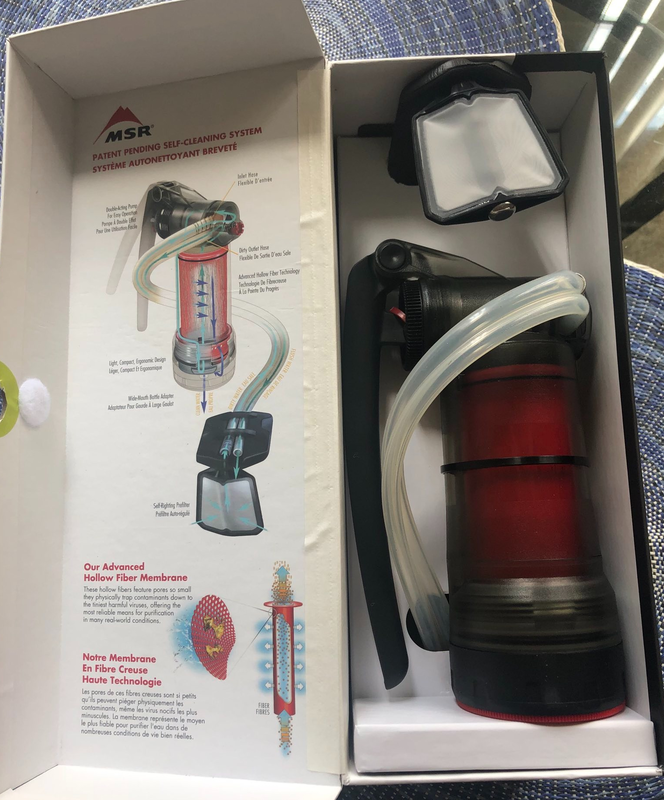
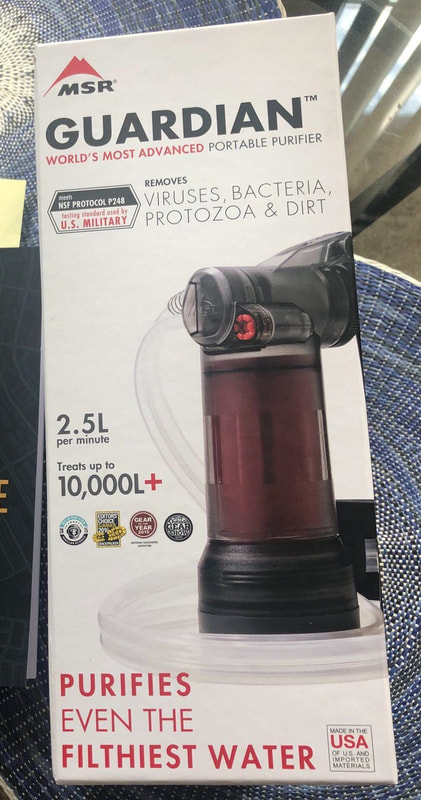
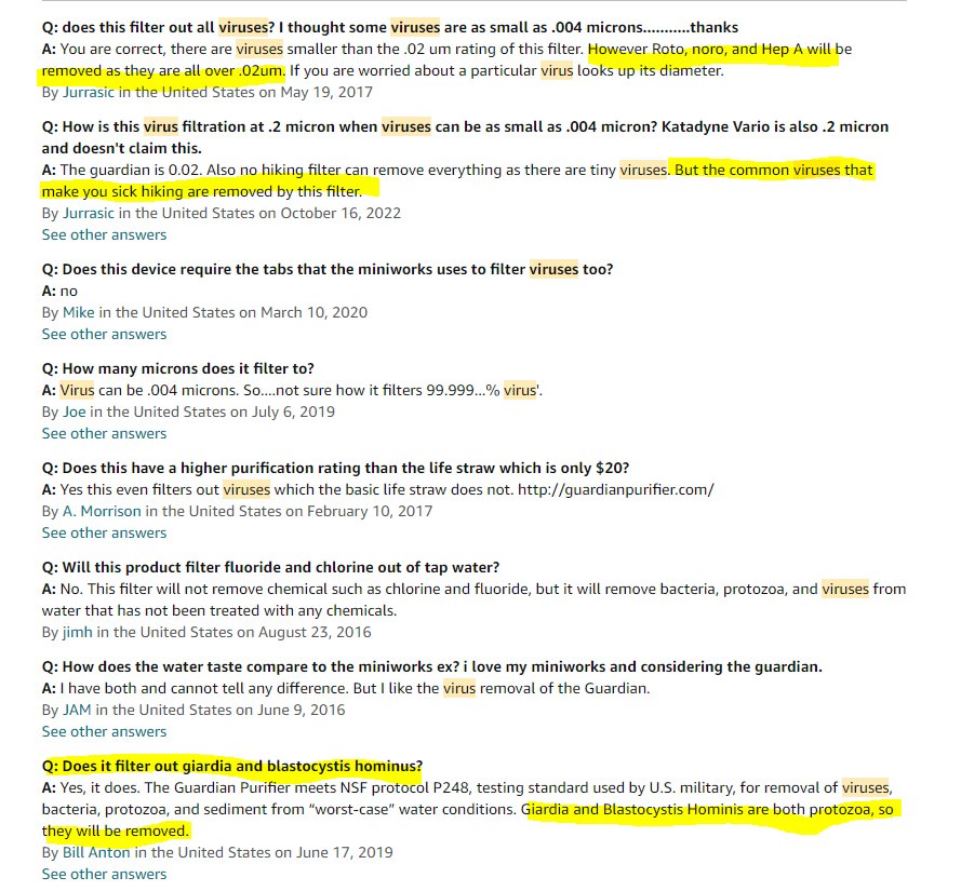
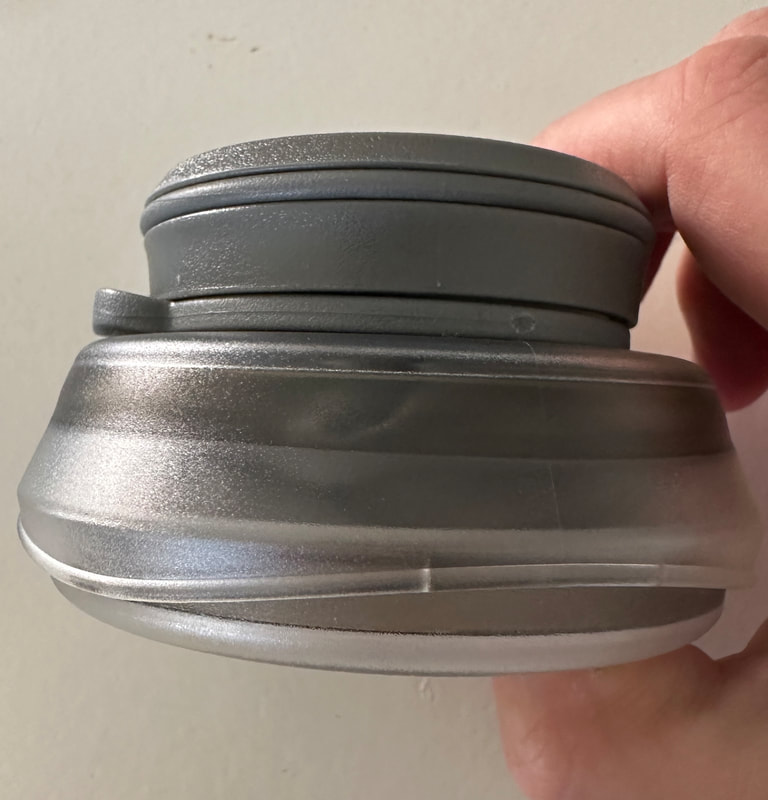
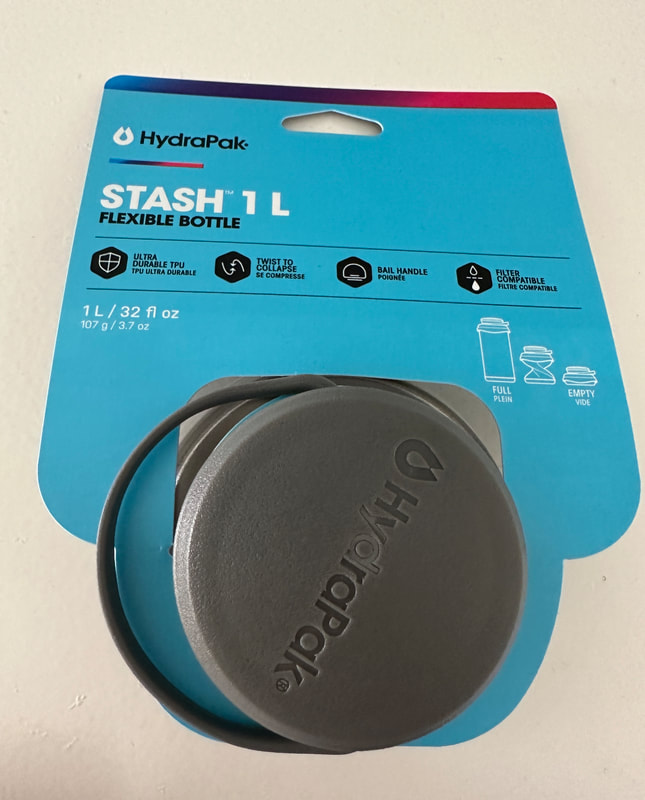
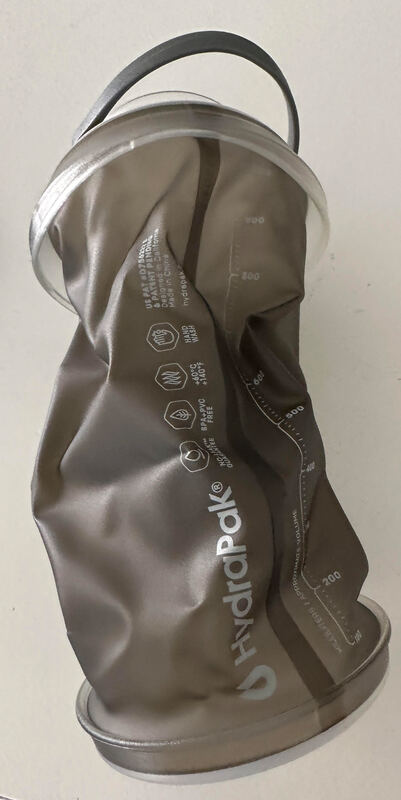
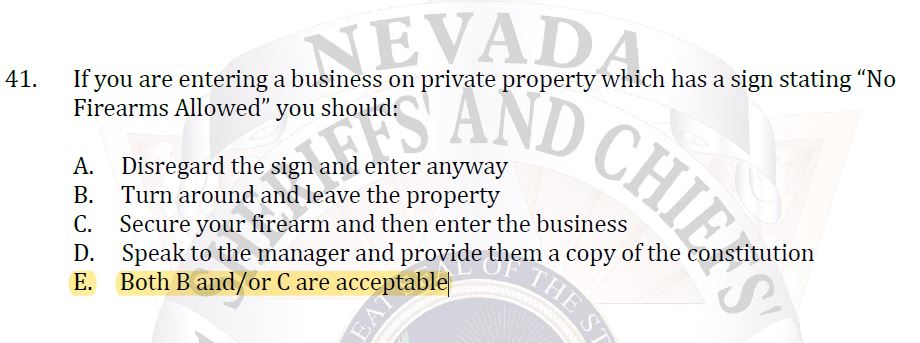

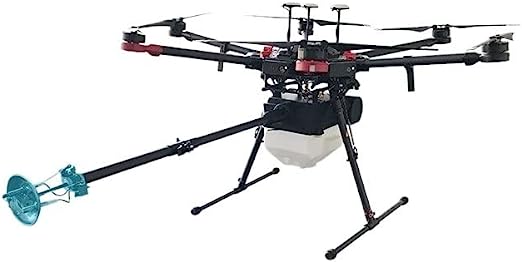
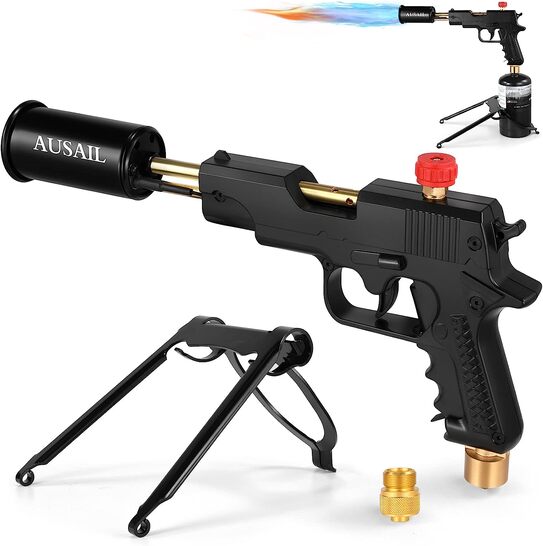
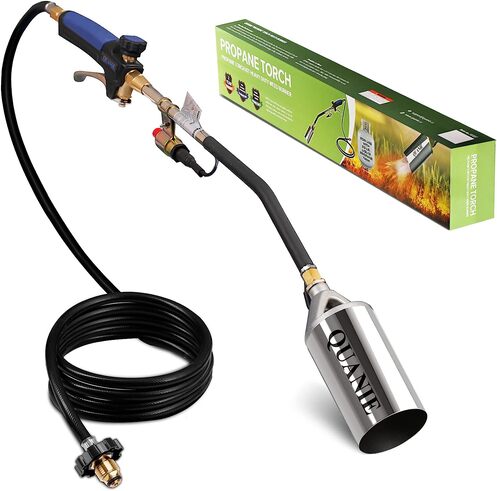
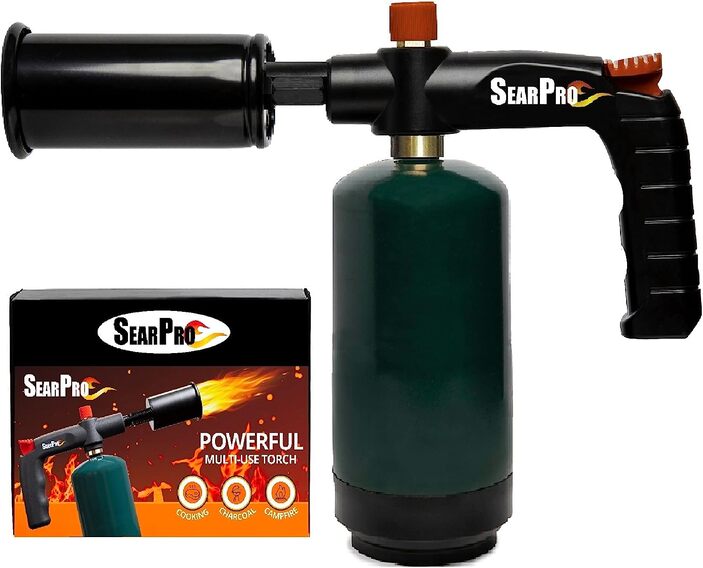
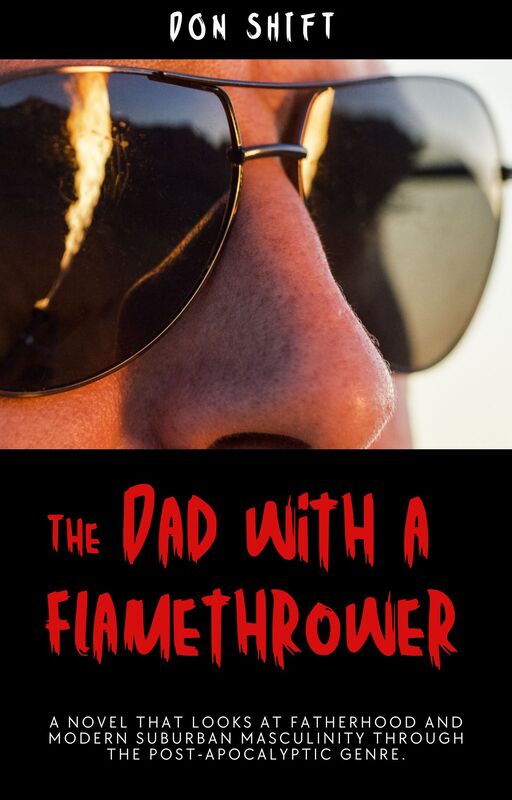
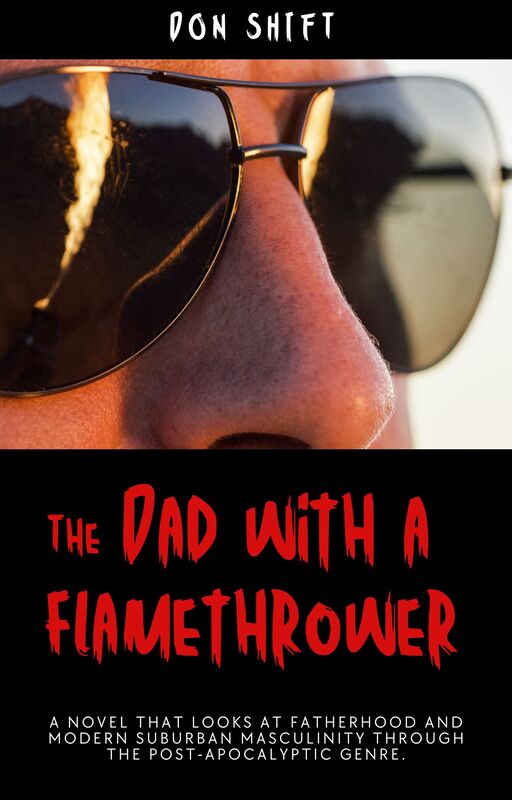
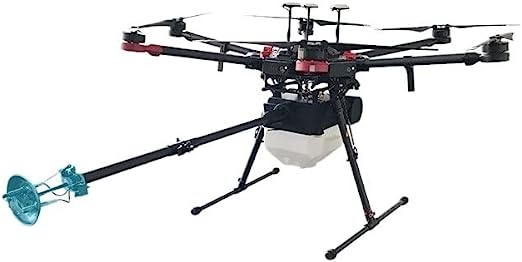
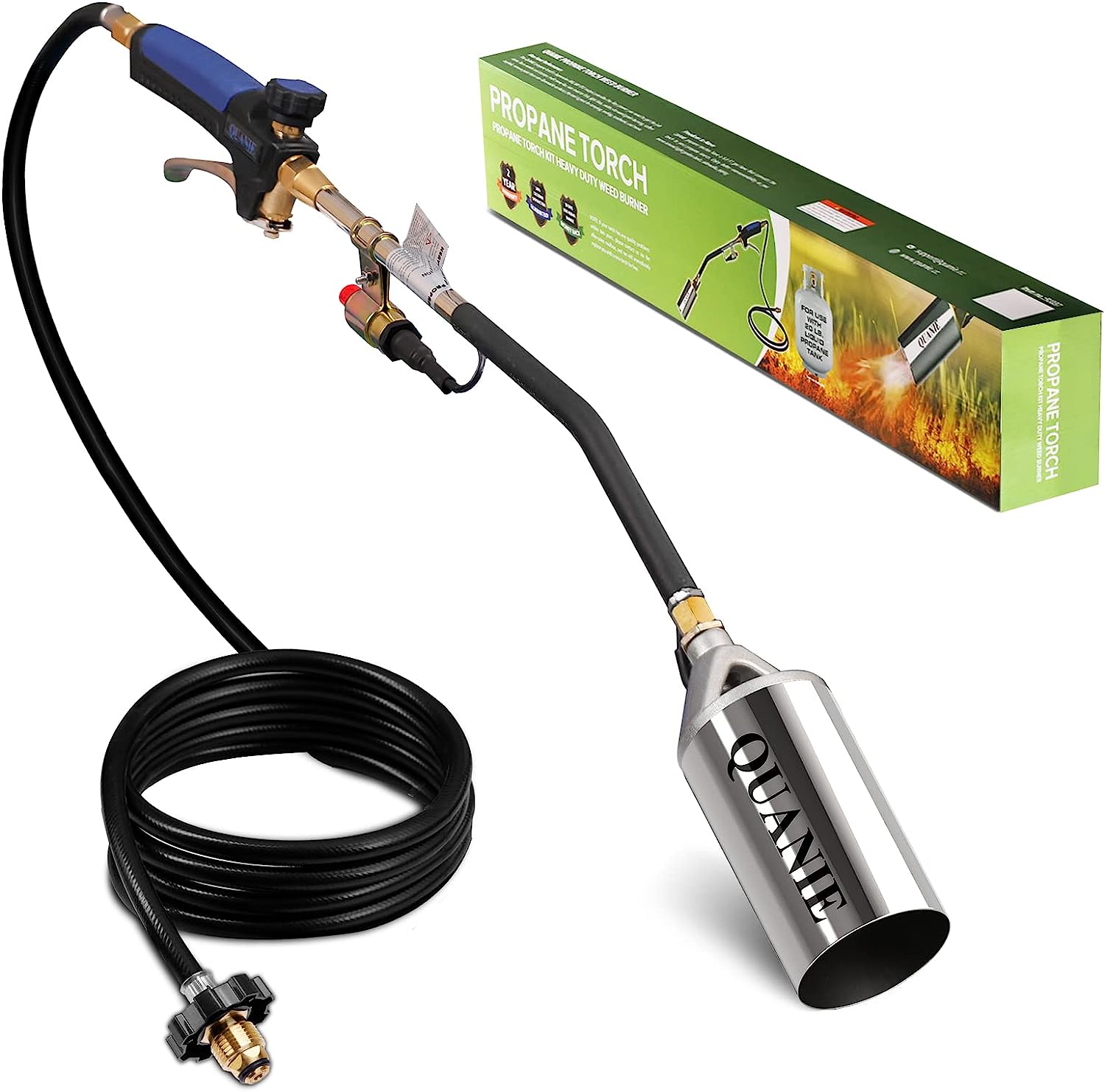
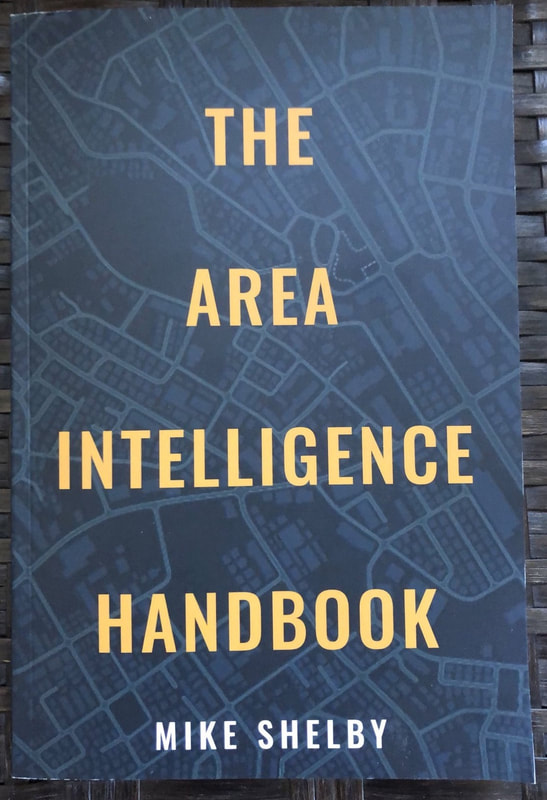
 RSS Feed
RSS Feed
